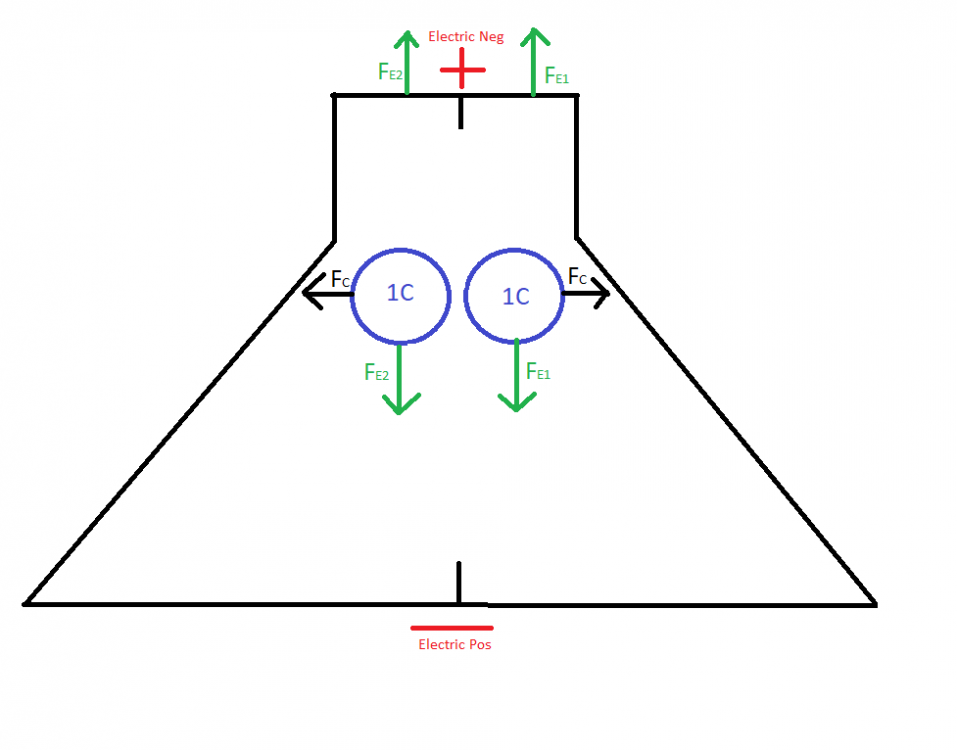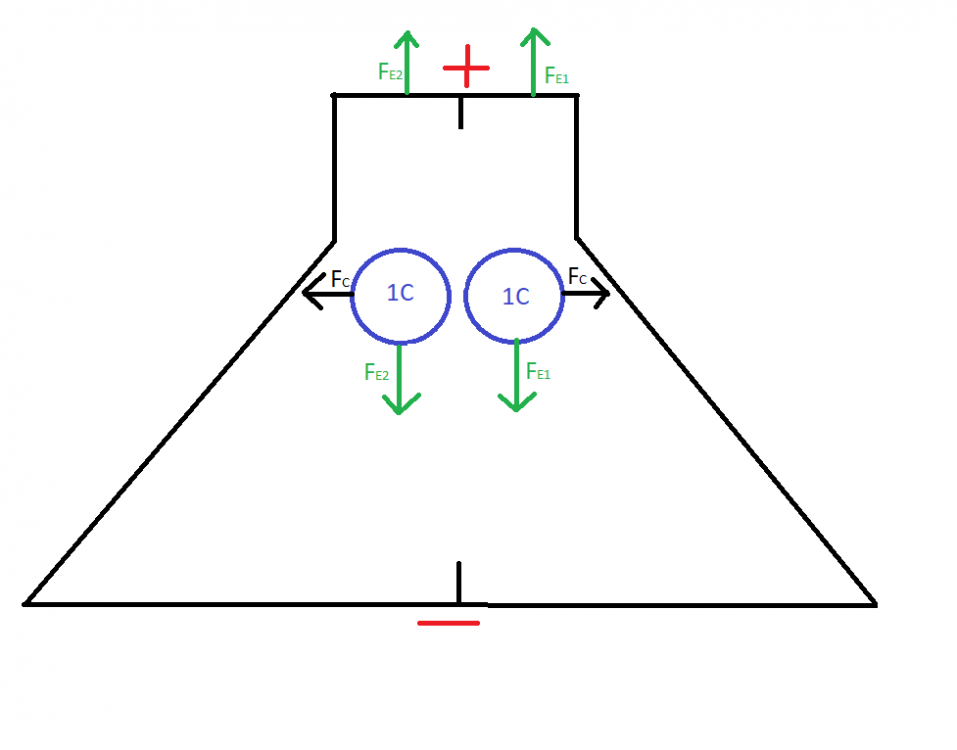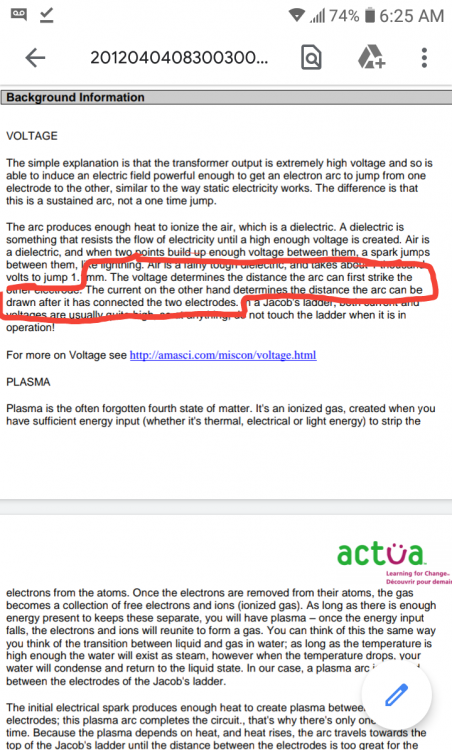

DandelionTheory
Senior Members-
Posts
225 -
Joined
-
Last visited
Content Type
Profiles
Forums
Events
Everything posted by DandelionTheory
-

Question about electrostatic force
DandelionTheory replied to DandelionTheory's topic in Classical Physics
Yeah. Sharing ideas isn't something that can be done with you. Why do you reply? Why does trolling the forums so important when you cannot comprehend a description of 2 force vectors? No for get this I'm done. Have fun gatekeeping, nobody will entertain your thoughts if you cannot entertain theirs. -

Question about electrostatic force
DandelionTheory replied to DandelionTheory's topic in Classical Physics
Neither is your respect. "Oh gatekeeper, find another that can understand the passwords so I may enter your citadel. Oh swansonnet gatekeeper of understanding." Is that better? -

Question about electrostatic force
DandelionTheory replied to DandelionTheory's topic in Classical Physics
"Next to each other" isn't hard to grasp. Yes and there was is no electric field vector either according to you. But.... Yeah I mentioned them. I explained with an if statement when things are changed for argument sake. No AC in the diagram either, yet it's part of the design.... Interesting. Is that before you don't understand my claim or after you assume I'm confused? Seems like you forgot what "if" means... Reading comprehension is important in physics...- 17 replies
-
-1
-

Question about electrostatic force
DandelionTheory replied to DandelionTheory's topic in Classical Physics
Coulomb force between the 2 charges is on the x axis, the electric field experienced by the 2 charges is on the y. In my head it was easier to visualize, is there a preferred method? -

Question about electrostatic force
DandelionTheory replied to DandelionTheory's topic in Classical Physics
|FC| = K(Q1Q2/r2) K = 9.0x109 Nm2 /C2 r = 0.001m Q1 = 1.5x10-8C Q2 = 1.5x10-8C gives 2.02N true. the distance isn't important until the electric field is alternated, i should have specified that. it makes little sense for the charge to initially hit the side of the cone with the first half of the AC cycle, it seems more probable the charge would collide with a side during the other half of the cycle thank you, ill keep that in mind. did i miss anything? -

Question about electrostatic force
DandelionTheory replied to DandelionTheory's topic in Classical Physics
I can do my best, although i do need help. Vectors are shown in the Magnitude(x, y) form. if the force on a charge in an electric field is: FE = qE where E is the electric field vector and q is the charge I messed up earlier and drew the picture with the electrodes labeled as their charge(q) and not their electric potential(battery poles). the force between 2 like charges can be shown: |FC| = K(Q1Q2/r2) where K is the Electrostatic Constant (9.0x109 Nm2 /C2 ), Q1= charge 1 Q2= charge 2 r = the distance between charges so if the electric field vector is FE = 1(0, -1), the coulomb force on charge 1 from charge 2 is FQ1 = 2(1, 0), the coulomb force on charge 2 from charge 1 is FQ2 = 2(-1, 0), and Ftotal = FE + FC a vector calculator shows me Ftotal for Q1 = 2.23(2, -1) which is 333.43 degrees, and Ftotal for Q2 = 2.23(-2, -1) which is 206.57 degrees if the electric field was an alternating, FE would cause each charge to change direction in the +-Y direction and FC would force the charges away from each other in the +-X direction. so i'm assuming due to the angle of the side of the cone, with every half cycle the charges would come into contact with it and reflect off; always moving from the center and always alternating their Y position with the AC cycle. i changed the photo -

Question about electrostatic force
DandelionTheory replied to DandelionTheory's topic in Classical Physics
*with each half cycle. -

Question about electrostatic force
DandelionTheory replied to DandelionTheory's topic in Classical Physics
The plus and minus indicate electric field direction. If FE was alternating, so the charge wiggles in the Y-+ direction, they would contact the angled sides of the cone with each cycle due to FC. -

Question about electrostatic force
DandelionTheory replied to DandelionTheory's topic in Classical Physics
Ion drives do not harvest beam drift for additional thrust as a primary design point. If FC is larger than FE the side of the cone will be a shorter distance from the charge than the center. -

Question about electrostatic force
DandelionTheory replied to DandelionTheory's topic in Classical Physics
using the coulomb force as thrust is hard... -
So 2 like charges are traveling along an electric field, the same direction, with force FExx spaced next to each other. If the electrostatic force between them is greater than FExx, the resulting force on each charge would be greater than 45° from FExx right? I'm looking to use the electrostatic force between charges to "bounce off the surface" of a cone. (picture) FE1 and FE2 are the forces between respective charges and the electric field, while FC Represents the electrostatic force between both charges.
-
Thank you. This doesn't answer the issue. A fluctuating electric field changes the current within the loop and it's magnetic field, got it. Why is this an additional factor when calculating velocity of a charged particle in a constant magnetic field? Why is the other magnetic field in question when the changing variables do not effect that field magnitude?
-
Yes, it's expected. Any charged particles motion has a magnetic field, an increasing velocity of that particle would increase it's magnetic field; also true for all charges in the circuit. I don't understand why we are not on the same page. I read the force on a charge is due to an applied external electric field and curved by an applied external magnetic field. No where does it say anything about lorentz forces due to the electrons own magnetic field.
-
I'm bad at math. I would like to ask how to express the change in velocity of an electron in an increasing electric field with constant magnetic field (separate magnet, I need electron path not force on the system) I learned from reading about magnetrons that the radius of the curved path of an electron in an electric field with perpendicular magnetic field is expressed R=(mv/qB) Is the change in radius due to the change in velocity expressed dR=(mdv/qB)? How do I express a change in velocity of an electron in an increasing electric field? -DT
-

If I increases, doesn't B increase too?
DandelionTheory replied to DandelionTheory's topic in Classical Physics
I found it through Google search: https://www.google.com/url?sa=t&source=web&rct=j&url=https://web5.uottawa.ca/www10/every_2012/document/20120404083003001.pdf&ved=2ahUKEwi7muHPhpjrAhXkLX0KHY5QCyoQFjAfegQIBxAB&usg=AOvVaw3_RHdoHQ4dwiVhXQq_5FB9 Thank you. Do you know what direction I would need to go to find that out? -

If I increases, doesn't B increase too?
DandelionTheory replied to DandelionTheory's topic in Classical Physics
Oh, haha. That too. I'm not calculating current increase, the question is: does the magnetic field increase due to current increase maintaining the spark gap, and does that additional current increase in the spark gap translate to force on the wires? I'm heavily leaning on current due to this -

If I increases, doesn't B increase too?
DandelionTheory replied to DandelionTheory's topic in Classical Physics
In the original scenario, the wires are bent away from each other; up is also a direction the wires are forced. This was in reference to the picture strange posted. Agreed. The initial spark is a factor of humidity, voltage, atmosphere pressure, dielectric breakdown, and some more. From what I've learned about Jacobs ladder papers, the current supplied maintains the arc. Perfect. That's the answer. But "forced away from the center of the current loop" is more specific. If the initial arc is at shortest path, maintain arc with increased current, which increases magnetic field and displaces arc and current in wires. When arc's contact with the ground wire reaches the length of the ground wire, disengage current supplied and calculate total displacement. I cannot assume further if this isn't agreed upon as the intent of the op. -

If I increases, doesn't B increase too?
DandelionTheory replied to DandelionTheory's topic in Classical Physics
The current in each rail acts on the armature and the opposite rail. The circuit is completed by the armature in a rail gun. in the scenario I presented, the thermionic emission, aka electric arc, substitutes the armature. This would complete the circuit right? Arc and wires would move perpendicular to magnetic field. Rail guns work this way, if the current is in flux over time. When the arc reaches a point past the bounds of the box, the wires have moved while the arc can return to the battery. I would assume this can be repeated. The original scenario had the wires bent away from each other because I assumed the arc would take the shortest path and would be forced downward away from the center of the current loop while the current in the wires would be forced away from the center of the current loop at each given slice of time. -

If I increases, doesn't B increase too?
DandelionTheory replied to DandelionTheory's topic in Classical Physics
I said "In this scenario, the positive wire's exposed end is 1mm from the closest end of the negative blue wire. The electric field applied is over 3kv to exploit thermionic emission, and induce a spark." As a physicist, what additional information is required for the scenario to be understood? I do not see external fields on rail guns. -
This is a question about variables having to do with force on a current. I need correction in my understanding, I don't get the difference when a current is in a wire vs not. I have drawn out a scenario, the contraption I drew consists of 5 parts. The positive wire (red), it's insolation with exposure at one end (black), the connecting structure (green), the negative pole(blue), and a power source (inside green). In this scenario, the positive wire's exposed end is 1mm from the closest end of the negative blue wire. The electric field applied is over 3kv to exploit thermionic emission, and induce a spark. If the current was to increase during thermionic emission, would the changing magnetic field push all current away from the center of the current loop?
-

repulsive or attractive force?
DandelionTheory replied to DandelionTheory's topic in Classical Physics
"and are the forces between the currents in the wires repulsive or attractive?" my speculation.





